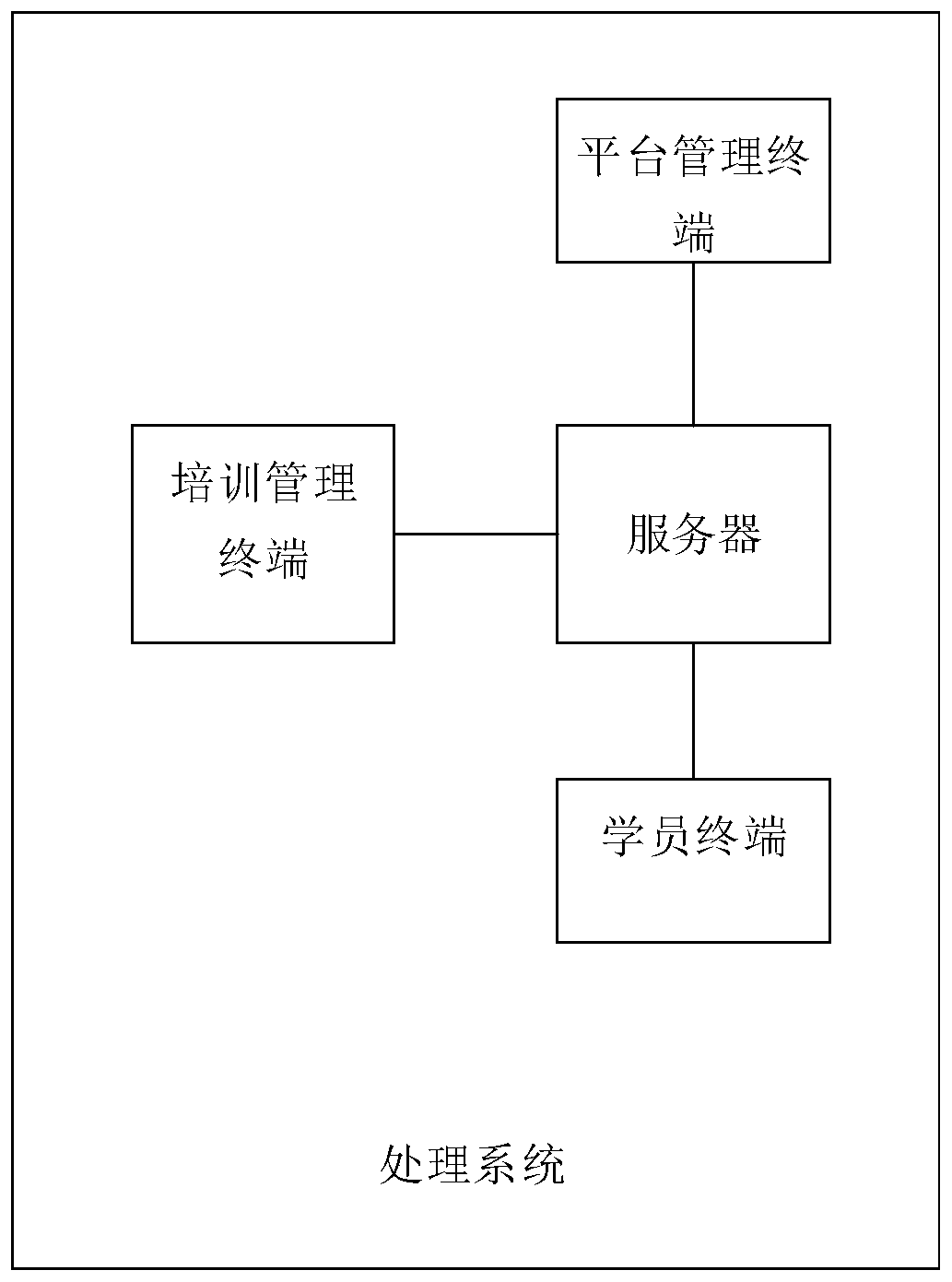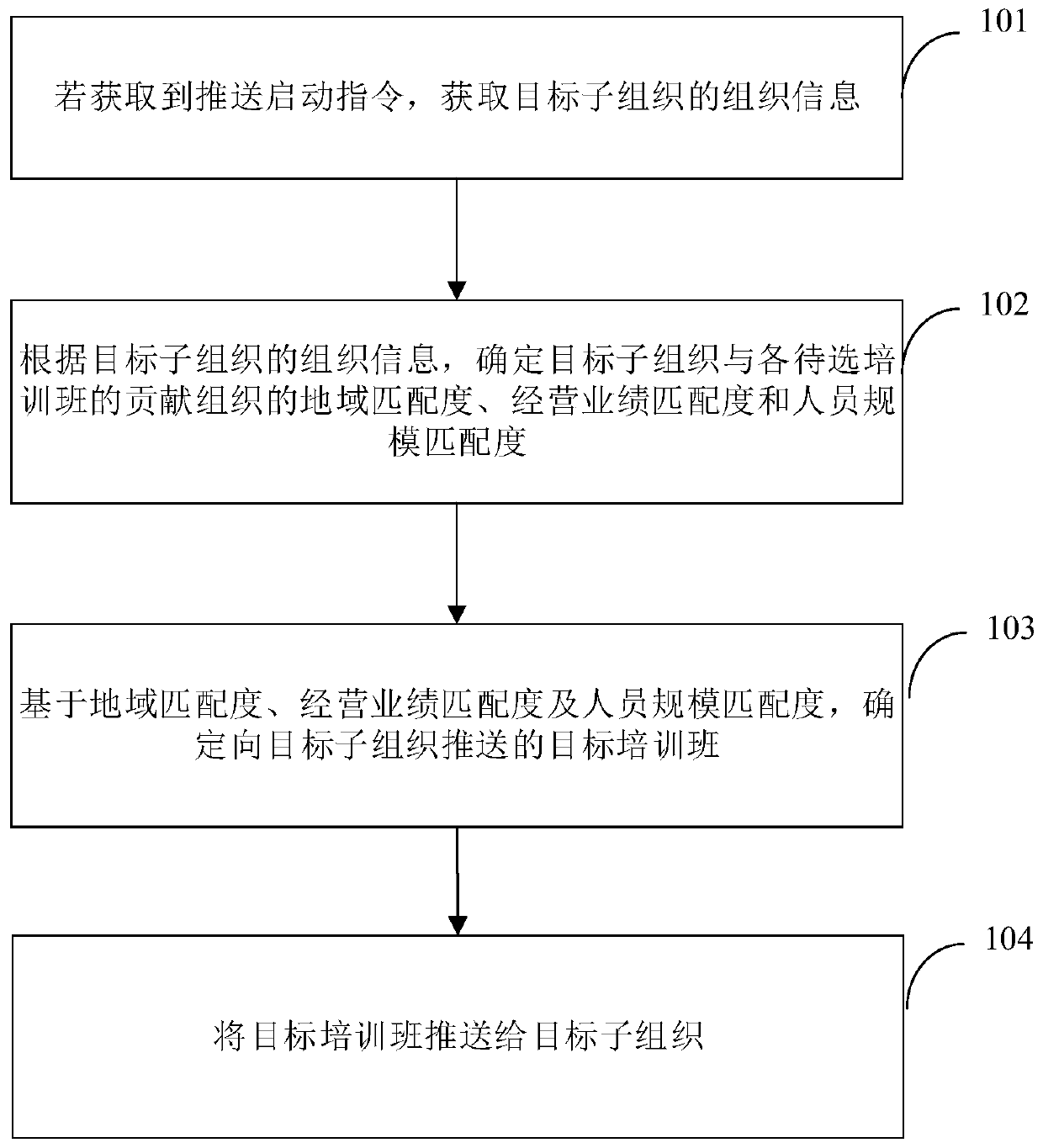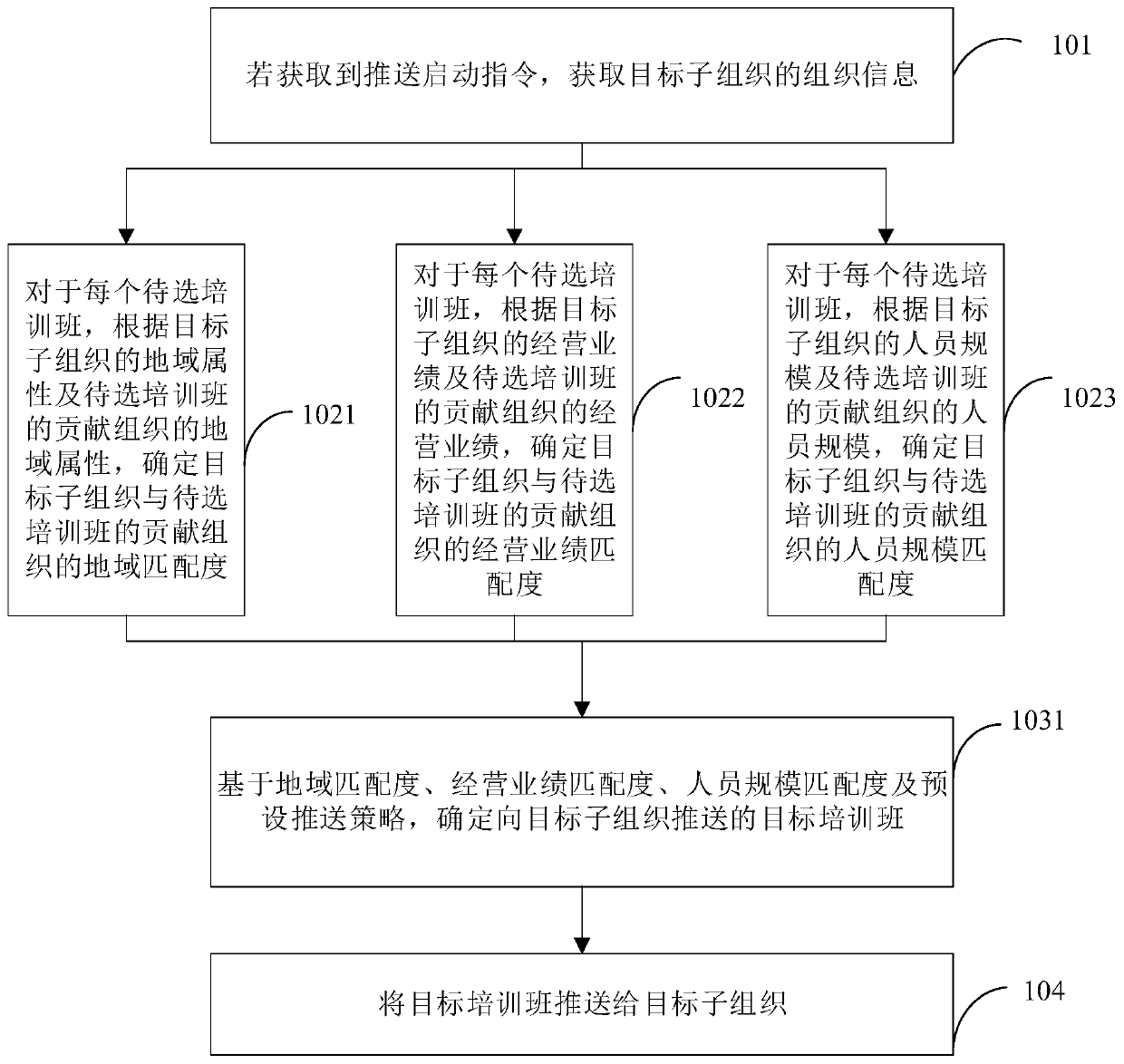Information pushing processing method and device and storage medium
A processing method and information push technology, applied in the Internet field, can solve problems such as low training efficiency and inaccurate provision, and achieve the effect of improving training efficiency, improving accuracy, and achieving effective sharing.
- Summary
- Abstract
- Description
- Claims
- Application Information
AI Technical Summary
Problems solved by technology
Method used
Image
Examples
Embodiment 1
[0048] This embodiment provides an information push processing method, which is used to push suitable training course information to various organizations of the enterprise. The execution subject of this embodiment is an electronic device, and the electronic device may be a server.
[0049] like figure 2 As shown, it is a schematic flowchart of the processing method for information push provided in this embodiment, the method includes:
[0050] Step 101, if the push start instruction is obtained, obtain the organization information of the target sub-organization.
[0051] Specifically, the push activation instruction may be triggered by a platform administrator, or may be automatically triggered periodically. For example, a trigger button can be set on the management interface of the platform administrator. When the platform administrator clicks the trigger button when needed, a push start instruction is sent to the management platform, and the management platform can obtai...
Embodiment 2
[0070] This embodiment provides a further supplementary description of the method provided in the first embodiment.
[0071] like image 3 As shown, it is a schematic flowchart of the processing method for information push provided in this embodiment,
[0072] As an implementable way, on the basis of the first embodiment above, optionally, according to the organizational information of the target sub-organization, determine the regional matching degree and business performance matching between the target sub-organization and the contributing organization of each training class to be selected degree of matching with the size of personnel, including:
[0073] Step 1021, for each training course to be selected, determine the regional matching degree between the target sub-organization and the contributing organization of the training course to be selected according to the geographical attributes of the target sub-organization and the contributing organization of the training cou...
Embodiment 3
[0112] This embodiment provides an electronic device, configured to execute the method provided by the foregoing embodiments.
[0113] like Figure 4 Shown is a schematic structural diagram of the electronic device provided in this embodiment. The electronic device 50 includes: at least one processor 51 and a memory 52;
[0114] The memory stores computer-executable instructions; at least one processor executes the computer-executable instructions stored in the memory, so that at least one processor executes the method provided by any one of the above embodiments.
[0115] According to the electronic device of this embodiment, if the push start instruction is obtained, the training demand information and organizational information of the target sub-organization are obtained; according to the organizational information of the target sub-organization, the relationship between the target sub-organization and the contributing organization of each training class to be selected is ...
PUM
 Login to View More
Login to View More Abstract
Description
Claims
Application Information
 Login to View More
Login to View More - R&D
- Intellectual Property
- Life Sciences
- Materials
- Tech Scout
- Unparalleled Data Quality
- Higher Quality Content
- 60% Fewer Hallucinations
Browse by: Latest US Patents, China's latest patents, Technical Efficacy Thesaurus, Application Domain, Technology Topic, Popular Technical Reports.
© 2025 PatSnap. All rights reserved.Legal|Privacy policy|Modern Slavery Act Transparency Statement|Sitemap|About US| Contact US: help@patsnap.com



